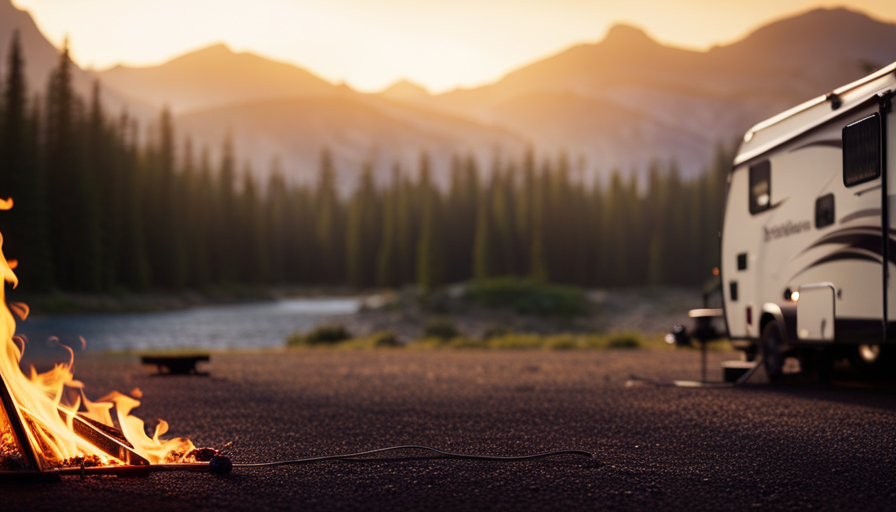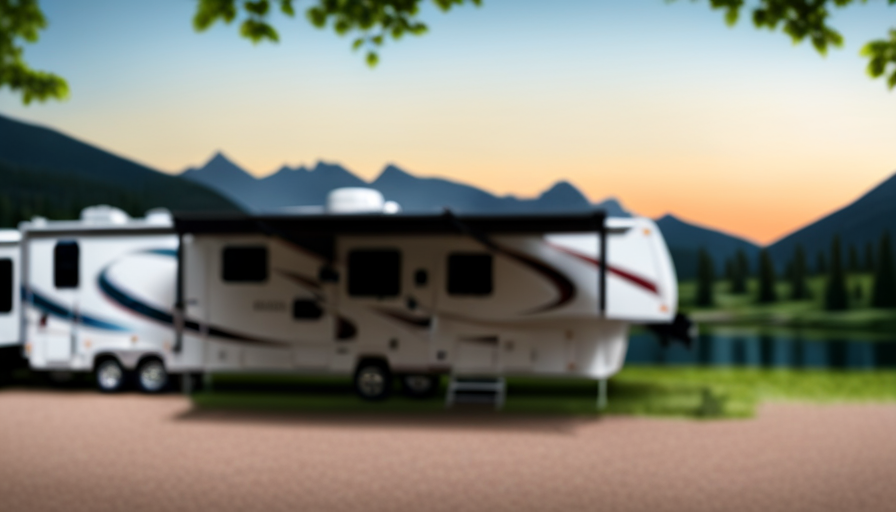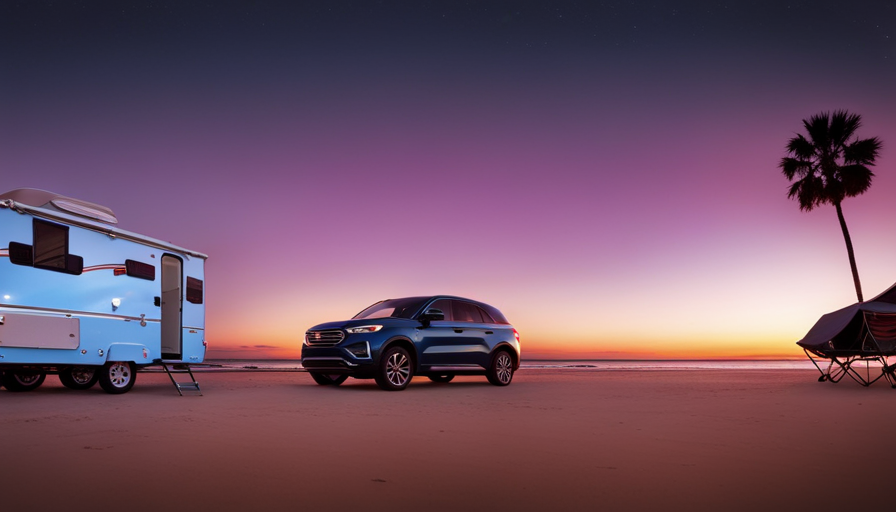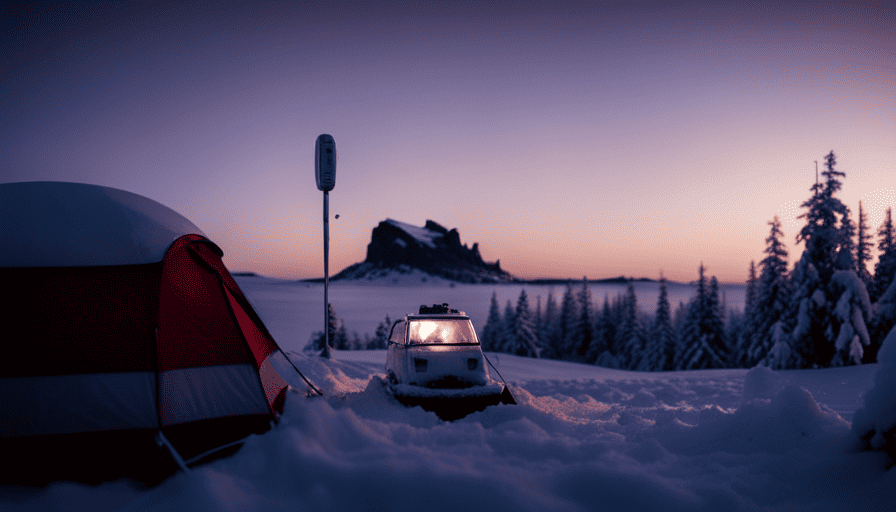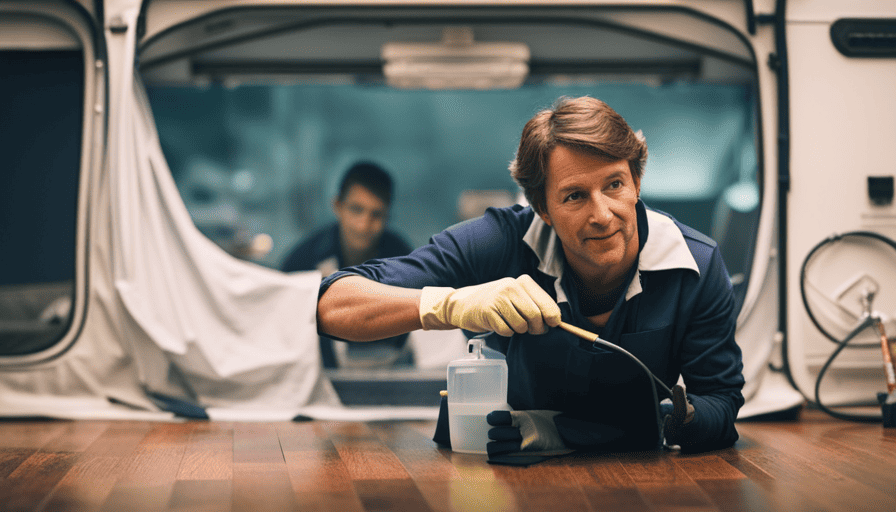In the realm of camping, there are few things as aggravating as not being able to supply power to your camper because of an insufficient extension cord. Imagine this: you’re on a secluded camping adventure, immersed in the beauty of nature, and all you crave is a steaming cup of coffee to kickstart your day. Unfortunately, your extension cord falls short of providing the required power to your camper, leaving you stuck and without your caffeine fix.
To avoid such disappointments, it is crucial to understand the importance of choosing the right gauge extension cord for your camper. The gauge refers to the thickness of the wire, and it directly affects the cord’s ability to carry electrical current safely and efficiently.
In this article, we will delve into the technicalities of extension cord gauges, explaining the different options available and the factors to consider when selecting the appropriate gauge for your camper. We will also explore common mistakes to avoid and provide maintenance tips to ensure the longevity of your extension cord.
So, let’s dive in and unravel the mysteries of choosing the perfect gauge extension cord for your camper. Before we get into choosing the perfect gauge extension cord, it’s important to consider some camper leveling tips. Ensuring that your camper is properly level is crucial for safety and comfort, so it’s essential to invest in a reliable leveling system or tools. This will also help ensure that your extension cord is not under unnecessary strain, which can lead to overheating and potential safety hazards.
Key Takeaways
- The right gauge extension cord is crucial for safe and efficient electrical current in a camper.
- Thicker gauge cords can carry more current without overheating and should be chosen for higher electrical loads.
- Factors to consider when selecting the gauge include distance, power requirements, amperage rating, and environmental conditions.
- Regularly inspect and properly maintain the extension cord for signs of damage, and choose a surge protector or circuit breaker for electrical protection.
Understanding Electrical Safety for Campers
Understanding electrical safety is crucial for campers, as it ensures a safe and enjoyable experience while exploring the great outdoors. One of the key aspects of electrical safety is understanding electrical capacity and proper extension cord usage.
When it comes to using electrical devices in your camper, it’s important to know the limits of your electrical system and ensure that you don’t overload it. Overloading can lead to electrical failures, damage to your camper’s electrical system, and even pose a fire hazard.
To prevent overloading, it’s essential to choose the right gauge for your extension cord. The gauge of an extension cord refers to its thickness and determines its electrical capacity. The thicker the gauge, the more electrical current it can safely handle. Choosing a gauge that’s too thin for your needs can result in overheating, which can damage the cord and potentially start a fire. On the other hand, using a gauge that’s too thick can be unnecessary and lead to added weight and bulkiness.
In the next section, we’ll delve further into the importance of choosing the right gauge for your extension cord, as it plays a crucial role in ensuring safe and efficient electrical usage during your camping trips.
Importance of Choosing the Right Gauge for Your Extension Cord
To ensure your electrical connection doesn’t turn into a frustrating tangled mess, it’s crucial that you select the appropriate size wire for your mobile home on wheels. The importance of safety can’t be overstated when it comes to handling electricity in your camper.
One of the key aspects of electrical safety is selecting the right gauge for your extension cord. Choosing the correct gauge for your extension cord is essential to prevent overheating, voltage drop, and potential fire hazards. The gauge refers to the thickness of the wire, with lower gauge numbers indicating thicker wires capable of handling higher electrical loads. A thicker wire can carry more current without overheating, ensuring a safe and reliable power supply to your camper.
When selecting the gauge for your extension cord, consider the power requirements of your camper’s electrical system. Determine the maximum amperage that your camper will draw and choose an extension cord with a gauge that can handle that load. It’s always better to go for a thicker gauge than you think you’ll need, as it provides a margin of safety and minimizes voltage drop.
In the subsequent section, we’ll explain the different gauge options available and provide you with the necessary information to make an informed decision about the right gauge for your camper’s extension cord.
Different Gauge Options Explained
Exploring the various options available for wire thickness can help you determine the perfect fit for your mobile home’s electrical needs. When it comes to extension cords for campers, selecting the right gauge is crucial to ensure safe and efficient power transmission. Here are the different gauge options explained:
-
16 Gauge: This is the thinnest option and is suitable for shorter distances and low-power applications. It can handle up to 10 amps of current and is ideal for small appliances and electronics.
-
14 Gauge: With a slightly thicker wire, this gauge can handle up to 15 amps of current. It is suitable for medium-sized appliances and power tools, making it a popular choice for campers.
-
12 Gauge: This gauge is thicker and can handle up to 20 amps of current. It is suitable for longer distances and high-power applications such as air conditioners and larger appliances.
-
10 Gauge: The thickest option, this gauge can handle up to 30 amps of current. It is ideal for heavy-duty applications and long distances, ensuring minimal voltage drop.
Considering the length and power requirements of your camper is essential when selecting the right gauge extension cord. By understanding the different gauge options and their capabilities, you can make an informed decision for your specific needs.
Considerations for Length and Power Requirements
When it comes to choosing the perfect fit for your mobile home’s electrical needs, you’ll want to consider the length and power requirements. This will ensure a safe and efficient power transmission for your setup.
The length of your extension cord plays a crucial role in determining the gauge you need. Longer cords experience more voltage drop, which can affect the power capacity and performance of your camper. To prevent this, it’s important to select a cord that is both long enough to reach the power source and thick enough to minimize voltage drop.
Power capacity is another important factor to consider when selecting the gauge. Different campers have varying power requirements, so it’s essential to know the specific power capacity of your equipment. This information can usually be found in the user manual or on the camper itself. Additionally, you should also check the voltage compatibility of your camper and ensure that the extension cord you choose matches the required voltage.
Considering these factors will help you determine the appropriate gauge for your camper’s extension cord.
In the next section, we will explore other important factors to consider when selecting the gauge, such as the amp rating and outdoor usage.
Factors to Consider When Selecting the Gauge
Consider the various factors that come into play when choosing the appropriate size for your mobile home’s electrical needs. Selecting the right gauge for your camper’s extension cord is crucial to ensure safe and efficient power supply. Several factors should be taken into account during the selection process.
First, consider the distance between the power source and your camper. The longer the cord, the higher the resistance and voltage drop, so a thicker gauge is required to compensate.
Additionally, the power requirements of your camper play a significant role. Higher wattage appliances and systems, such as air conditioners or heaters, demand more current and thus require a thicker gauge cord.
Furthermore, the amperage rating of the cord and the power source should match to prevent overheating or circuit damage.
Lastly, consider the environmental conditions, such as extreme temperatures or moisture, which may require a cord with additional insulation or weatherproof features. Taking these factors into consideration will help you select the right gauge extension cord for your camper.
Moving forward, let’s explore some tips for proper extension cord usage.
Tips for Proper Extension Cord Usage
To ensure a smooth and safe power supply, it’s essential to follow these tips for using your mobile home’s electrical lifeline.
-
Extension Cord Safety:
- Inspect the cord before each use, checking for any signs of damage such as fraying or exposed wires. Replace any damaged cords immediately.
- Avoid running extension cords through high-traffic areas or under carpets where they can be easily tripped over or damaged.
- Never overload an extension cord by plugging in too many devices. Check the cord’s amp rating and make sure it can handle the total load.
- Keep extension cords away from water and moisture to prevent the risk of electric shock.
-
Extension Cord Maintenance:
- Clean the cord regularly to remove dirt and debris, which can cause damage and decrease its lifespan.
- Store the cord properly by coiling it loosely and avoiding sharp bends or kinks that can weaken the cord.
- Use cord reels or organizers to prevent tangling and ensure easy access when needed.
- Regularly check the plug connections for loose or corroded pins, which can affect the cord’s performance.
By following these extension cord safety tips and maintaining your cords properly, you can ensure a reliable and secure power supply for your camper. Now, let’s move on to the next section about ensuring proper grounding and protection.
Ensuring Proper Grounding and Protection
Proper grounding and protection are crucial for ensuring a secure and stable electrical connection in your mobile home. When it comes to the electrical system in your camper, it’s important to follow the guidelines for proper grounding to prevent electrical shock and to protect your appliances and devices.
The first step in ensuring proper grounding is to connect the extension cord to a grounded outlet. This will provide a safe path for electrical current to flow and prevent any potential hazards.
In addition to proper grounding, it’s essential to have electrical protection in place. This can be achieved by using a surge protector or a circuit breaker. A surge protector is designed to protect your electrical devices from sudden voltage spikes, which can cause damage. It’s recommended to use a surge protector that’s specifically designed for outdoor use and has a high enough joule rating to handle the electrical load.
Furthermore, a circuit breaker is an important safety device that automatically cuts off the electrical supply when it detects an overload or a short circuit. It’s essential to choose a circuit breaker that matches the electrical load of your camper to ensure proper protection.
By ensuring proper grounding and having electrical protection in place, you can create a safe and reliable electrical connection in your mobile home. However, it’s important to note that there are common mistakes to avoid when using extension cords in a camper, which we’ll discuss in the next section.
Common Mistakes to Avoid
Be careful not to ‘trip up’ your electrical system by making common mistakes when connecting your mobile home to a power source. Proper grounding is crucial for the safety and efficiency of your camper’s electrical system. Here are some common mistakes to avoid:
-
Neglecting to check the condition of the grounding wire: Ensure that the grounding wire is in good condition and securely connected to both the camper and the power source. A loose or damaged grounding wire can lead to electrical shocks or equipment damage.
-
Using the wrong type or gauge of extension cord: Using an extension cord that isn’t rated for outdoor use or that has a lower gauge than recommended can result in overheating, voltage drop, and even electrical fires. Always use an extension cord specifically designed for outdoor use and check the camper’s electrical requirements to determine the appropriate gauge.
It’s essential to be aware of these common mistakes to ensure proper grounding and protect your camper’s electrical system. By avoiding these pitfalls, you can prevent potential hazards and maintain a reliable power supply for your mobile home.
Moving forward, let’s explore the maintenance and care of extension cords to further enhance the safety and longevity of your camper’s electrical setup.
Maintenance and Care of Extension Cords
When it comes to extension cords for your camper, it’s important to avoid common mistakes to ensure the safety and efficiency of your electrical system.
Now, let’s delve into the crucial topic of maintenance and care of extension cords. Proper storage of your extension cord is essential to prevent damage and ensure longevity. Coiling the cord neatly and securing it with a cord reel or tie will prevent tangling and minimize wear and tear.
Additionally, it is important to regularly inspect your extension cord for any signs of damage, such as frayed or exposed wires. If you notice any issues, it’s crucial to repair or replace the cord immediately. Repairing an extension cord requires careful attention to detail and should only be done by a qualified professional. Remember to always follow the manufacturer’s instructions and guidelines when repairing or replacing any electrical components.
By properly maintaining and caring for your extension cord, you can ensure a reliable and safe power source for your camper.
With that in mind, let’s move on to our final thoughts and recommendations for choosing the right extension cord for your camper.
Final Thoughts and Recommendations
In conclusion, it’s essential to consider these tips and suggestions in order to ensure a smooth and worry-free experience with your camper’s power supply.
When it comes to choosing the right gauge for your camper’s extension cord, it’s crucial to understand the power requirements. The gauge of the cord determines its capacity to handle electrical current. For campers, it is recommended to use a heavier gauge extension cord, such as a 10-gauge or 12-gauge cord. These cords can handle higher amperage and provide a more stable power supply.
Understanding your camper’s power requirements is vital in selecting the appropriate gauge. Different appliances and devices in your camper may have varying power needs. For example, air conditioners and refrigerators typically require higher amperage compared to smaller devices like phones or laptops. By knowing the power requirements of your camper’s appliances, you can choose the right gauge extension cord that can safely deliver the required electrical current.
Additionally, it’s important to consider the length of the extension cord. Longer cords have higher resistance, which can result in voltage drops and potential power issues. To avoid this, it is recommended to use the shortest length possible for your needs.
By carefully choosing the right gauge extension cord and understanding your camper’s power requirements, you can ensure a reliable and efficient power supply during your camping adventures.
Frequently Asked Questions
What are the potential dangers of using the wrong gauge extension cord for my camper?
Using the wrong gauge extension cord for your camper can lead to potential dangers and damage. The power requirements of your camper must be met by the correct gauge cord to ensure safe and efficient operation.
Using an extension cord with a lower gauge than required can result in overheating and increased risk of fire. On the other hand, using a higher gauge cord may not supply sufficient power, causing equipment failure.
It’s crucial to always use the appropriate gauge extension cord for your camper to avoid these hazards.
How do I determine the power requirements of my camper and choose the appropriate gauge extension cord?
Determining camper power requirements involves assessing the electrical devices you plan to use. Calculate the wattage of each device and add them together to determine the total power requirement.
To choose the appropriate gauge extension cord, consider the distance between the power source and your camper. Longer distances require thicker cords to minimize voltage drop.
Consult a wire gauge chart to match the appropriate cord gauge with your power requirement and distance.
Can I use a longer extension cord if I have a higher gauge?
Yes, you can use a longer extension cord if you have a higher gauge. The gauge of an extension cord refers to its thickness, with a lower gauge indicating a thicker cord. Higher gauge extension cords have more resistance, which can cause a drop in voltage over longer distances.
However, using a higher gauge cord can help compensate for this drop and ensure that your camper receives the appropriate power. It’s important to consider the length and gauge of the extension cord to prevent power loss and potential damage to your camper’s electrical system.
Are there any safety features or certifications I should look for when selecting an extension cord for my camper?
When selecting an extension cord for your camper, it’s important to consider safety certifications and the recommended gauge. Look for cords that are certified by reputable organizations like UL or ETL, as this ensures they meet safety standards.
Additionally, choose a cord with the appropriate gauge for your camper’s electrical needs. This information can usually be found in your camper’s manual or by consulting with a professional.
Prioritizing safety and using the correct cord will help prevent electrical hazards.
What are some signs that my extension cord may need maintenance or replacement?
Signs of extension cord damage include frayed or exposed wires, cracked or damaged insulation, and loose or damaged plugs. Regular maintenance is crucial to ensure the safety and longevity of your extension cord. Before each use, inspect the cord for any signs of wear or damage. Clean the cord regularly and store it properly to prevent tangling or damage. Avoid overloading the cord and make sure it isn’t exposed to excessive heat or moisture.
What Type of Extension Cord Should I Use to Power My Pop Up Camper?
When organizing a pop up camper, it is crucial to choose the right type of extension cord. Opt for a heavy-duty outdoor cord that can handle the power demands of your camper. Look for one with the appropriate amperage rating and length to ensure a safe and reliable power supply during your camping adventures.
Conclusion
In conclusion, selecting the right gauge extension cord for your camper is crucial for ensuring electrical safety and efficient power transmission. Just like the sturdy foundation of a camper, the proper gauge acts as the foundation for a reliable electrical system.
By understanding the different gauge options and considering factors such as length and power requirements, you can make an informed decision. Remember, a well-maintained and properly grounded extension cord is like a lifeline, protecting your camper and its occupants.
Avoid common mistakes and prioritize regular maintenance to ensure a seamless camping experience. Happy camping!

